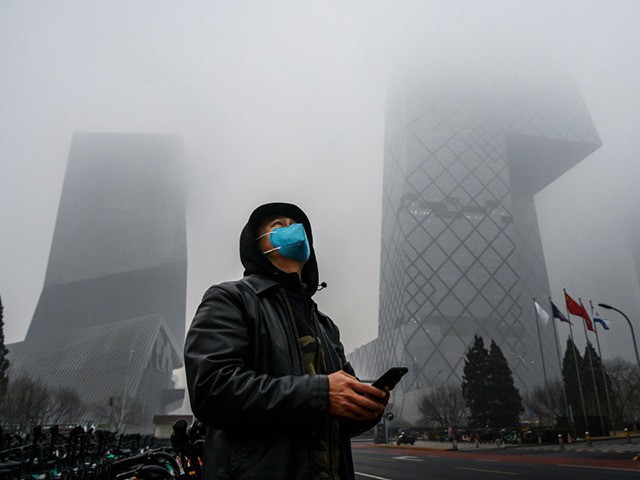Nearly 90 percent of the world’s most polluted cities are in China and India, and the majority of the rest are in Pakistan and Indonesia, researchers from the 2019 World Air Quality Report revealed on Tuesday.
Despite comprising over 90 percent of the world’s most polluted cities, India and China rank fifth and 11th respectively among countries with the deadliest kind of pollution, known as PM2.5 pollution. For this kind of pollution, the diameter of each air particle is roughly 2.5 microns, equivalent to roughly one-thirtieth the width of a human hair. Such microscopic flecks are so tiny that they can easily enter the bloodstream through the respiratory system, leading to diseases including asthma, lung cancer, and heart failure.
The report, published on Tuesday by IQAir Group and Greenpeace, who analyzed 5,000 large cities worldwide, found that Bangladesh has the highest relative levels of PM2.5 pollution, followed by Pakistan, Mongolia, and Afghanistan. However, China and India’s combined population of roughly 2.8 billion people (around 28 percent of the entire globe) is so large that they comprise over 90 percent of the world’s most polluted cities.
Some of the world’s cities with high PM2.5 pollution levels include the Indian capital of New Delhi, Lahore in Pakistan, Dhaka in Bangladesh, Kolkata in India, and Jakarta in Indonesia. Also included on the list was the Chinese city of Wuhan, where the current coronavirus epidemic first broke out, as well as major centers including Chengdu and Beijing.
Over seven million of the premature deaths attributed by the World Health Organization (WHO) to pollution exposure are a result of PM2.5 particles, which typically originate from sandstorms, wildfires, agriculture, and heavy industry, particularly the burning of fossil fuels.
“Air pollution is the world’s leading environmental health threat,” said IQAir CEO Frank Hammes on the report’s publishing. “Ninety percent of the global population is breathing unsafe air.”
Despite China’s average urban PM2.5 concentration falling a sizeable 20 percent between 2018 and 2019, the country still accounts for 117 of the 200 most polluted cities worldwide. Additionally, just two percent of China’s cities were within the WHO’s guidelines for PM2.5 levels, while 53 percent exceeded targets set by Beijing. This is almost certainly the main cause of the more than one million Chinese people who die every year as a result of air pollution.
In India, most major cities are gradually experiencing falls in their pollution although these figures remain unsustainably high. Nevertheless, small particle pollution exceeds WHO limits by 500 percent, meaning the country is still a long way off bringing it back down to normal levels.
The statistics indicate the overwhelming environmental impact of China and India’s growing industry, thus serving as a reminder that any international pushback against damage to the environment and climate must include major action from both countries.
Of cities with a population of over one million, some of the least affected included Adelaide in Australia, Helsinki in Finland, and Calgary in Canada. Two of the least affected are also in the United States, with San Jose and New York both boasting relatively low levels of pollution.
However, India and China’s dominance of the top 200 list may also be a result of the lack of information, particularly in parts of Africa and the Middle East where collecting environmental data is notoriously difficult.
“What cannot be measured cannot be managed,” Hammes explained. “Africa, a continent of 1.3 billion people, currently has less than 100 monitoring stations that make PM2.5 data available to the public in real-time.”
Follow Ben Kew on Facebook, Twitter at @ben_kew, or email him at bkew@breitbart.com.

COMMENTS
Please let us know if you're having issues with commenting.